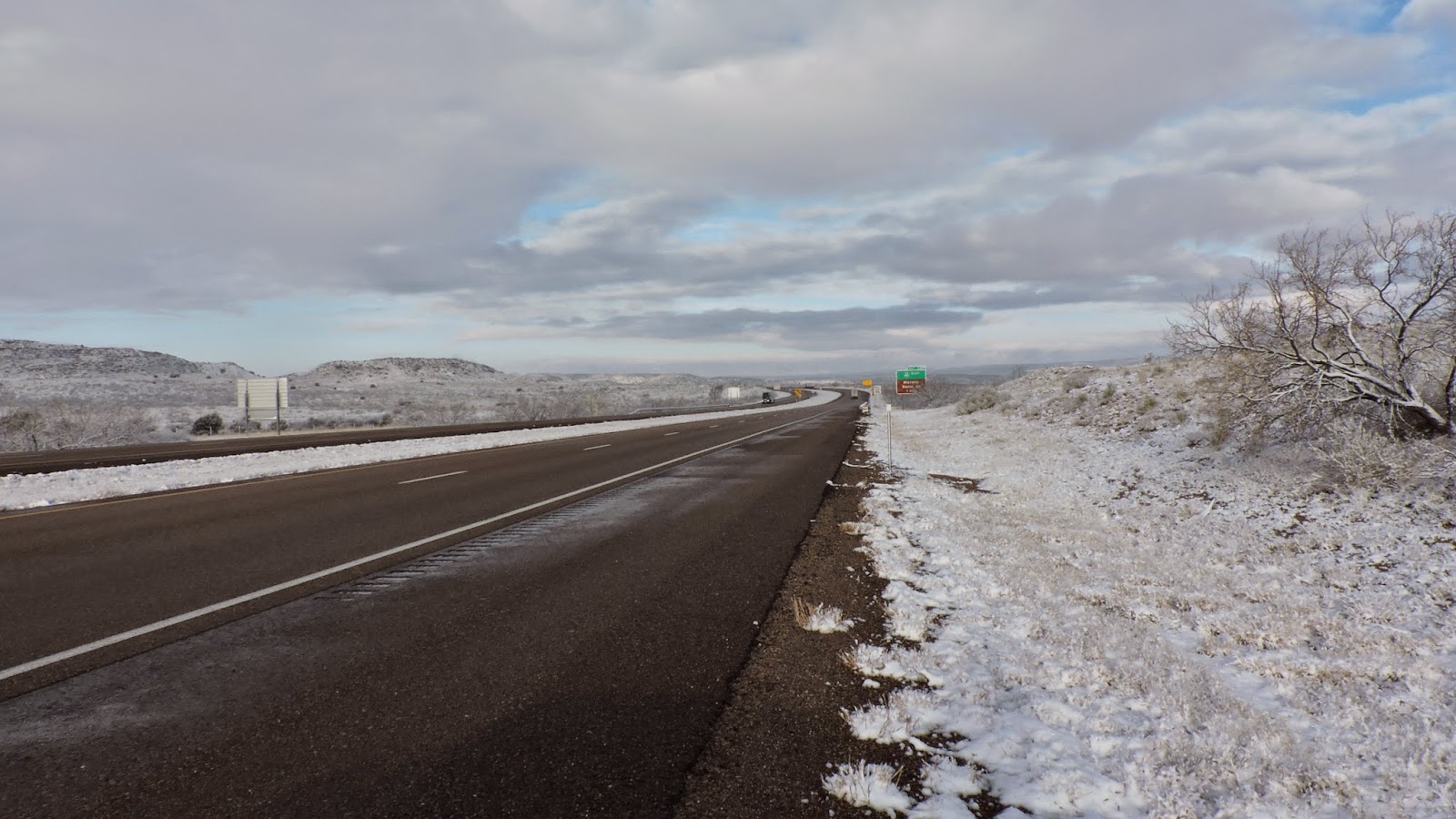Finally, finally we come upon the remnants of the forest.
The word "forest" implies standing trees. Ever since I first learned of this place I expected to drive up on vertical, stone-infested tree trunks. Not. I confess to being disappointed. But what we did find is amazingly interesting - and beautiful!
There, resting among the teepees is an enormous stone log. From this point on there are remnants of the forest scattered everywhere.
So, how do these logs crystallize into petrified wood? It takes a precise combination of events and elements, which is why petrified forests are so rare. First, they must be buried in mud in a manner that prevents oxygen from reaching them. The oxygen is what would cause the cellulose to disintegrate. Remember that this entire area used to be - for a long, long time - under water. The teepees are in fact composed of what is called mudstone. (Same stuff those beautiful formations in Death Valley are made from.)
Once buried, the wood needs to be in contact with mineral rich water. These minerals are deposited right down to the microscopic level, preserving even the tiniest detail of the original tree structure. What's really, really cool is that, depending on the minerals in that water, the slices of tree-stone sparkle with a myriad of colors. Sometimes even exotic minerals are present and shine in extremely rare red and green hues!
Sorry for the glare, but these polished specimens are so valuable that they have been placed behind glass at the Petrified Wood Company.
 Wood is not the only thing that gets petrified. There are petrified clam shells, and here's a collection of Nautilus shells. These must have taken hours to hand polish.
Wood is not the only thing that gets petrified. There are petrified clam shells, and here's a collection of Nautilus shells. These must have taken hours to hand polish.So, you ask, what good is all of that "stuff." Well, Granpa bought some beautiful pieces that he intends to inset in a wood table top so that I have a "petrified" sofa table.
Or, maybe you could use a spare bowling ball??
(These are actually petrified wood spheres - no finger holes.)
They say that millions of pieces have been taken by tourists before a law was passed weighing very heavy fines for that: $300 per pound. If you really want some pieces of petrified wood, leave the park and buy it for $2 a pound in tourist traps or at a really cool place called Petrified Wood Company in Holbrook. (Just turn right out of the south entrance.)
There must be acres and acres of petrified wood in the backcountry/off-road, because this Wood Company has tons (literally) of this stuff for sale! I will have to admit though, that Granpa was enormously tempted to take a piece from inside the boundaries of the Park (mostly because we didn't know at the time what was available to buy.) I told him that if we showed the piece to anyone back home we'd have to be admit to being thieves - not a good Christian witness. LOL, so he just took a picture of a field of pieces:
All of the brown in the foreground of the photo is made up of small pieces of petrified tree. Each piece is absolutely gorgeous. Quite a bit of it is polished by the sands that make up this environment.
(Oh, how I wanted to pocket that little piece of temptation!!)
So, Granpa finally got to see the real-deal Petrified Forest. Now maybe we'll have to go to the other Petrified Forests scattered around the U.S.:
- United States – petrified wood sites include:
- Petrified Wood Park in Lemmon, South Dakota.
- Ginkgo/Wanapum State Park in Washington State.
- Petrified Forest National Park in Arizona.
- Petrified Forest (California) in California.
- Mississippi Petrified Forest in Flora, Mississippi.
- Florissant Fossil Beds National Monument near Florissant, Colorado.
- Yellowstone Petrified Forest, Yellowstone National Park, Wyoming.
- Gallatin Petrified Forest, Yellowstone National Park, Wyoming.
- The south unit of Theodore Roosevelt National Park outside Medora, North Dakota.
- Gilboa Fossil Forest, New York.
- Escalante Petrified Forest State Park in Utah.
- Petrifying Springs in Kenosha, Wisconsin.
- Agate Desert in the Upper Rogue River Valley near Medford, Oregon. Though large pieces are rare, the area abounds in petrified fragments.
Who knew???
.JPG)






































.JPG)








